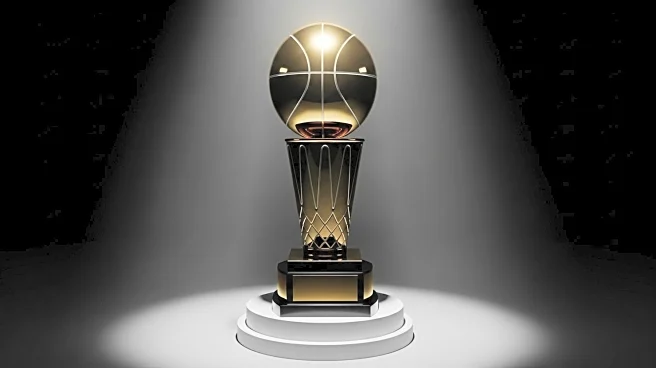What's Happening?
The WNBA postseason has achieved record viewership on ESPN, with the 2025 playoffs being the most-watched ever on the network. An average of 1.2 million viewers tuned in across 24 games, marking a 5% increase from the previous year. The Finals between the Las Vegas Aces and Phoenix Mercury drew significant attention, with Game 1 attracting 1.9 million viewers, the highest since 1997. The Las Vegas Aces secured their third championship since 2022, with A'ja Wilson named Finals MVP for her outstanding performance. Despite a slight decline in overall Finals viewership compared to 2024, the series maintained strong audience numbers, ranking as the second-most watched all-time.
Why It's Important?
The record viewership underscores the growing popularity and visibility of the WNBA, reflecting increased interest in women's sports. This trend may lead to greater investment and sponsorship opportunities for the league, enhancing its financial stability and growth. The success of the postseason highlights the potential for expanding media coverage and fan engagement, contributing to the broader recognition and support of women's athletics. The increased audience numbers also demonstrate the league's ability to attract viewers and compete with other major sports events.
What's Next?
The WNBA may leverage this success to negotiate better broadcasting deals and sponsorships, further boosting its financial prospects. Continued efforts to promote the league and its players could enhance fan engagement and expand its audience base. Stakeholders such as ESPN and team franchises may explore strategies to capitalize on the growing interest in women's sports, potentially leading to more comprehensive coverage and marketing initiatives.
Beyond the Headlines
The record viewership may prompt discussions on gender equality in sports and the importance of providing equal opportunities and recognition for female athletes. The success of the WNBA postseason could inspire other women's sports leagues to pursue similar growth strategies, fostering a more inclusive and diverse sports landscape. This development may also encourage societal shifts in perceptions of women's sports, promoting greater appreciation and support.











